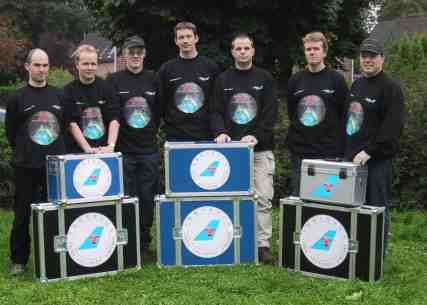|
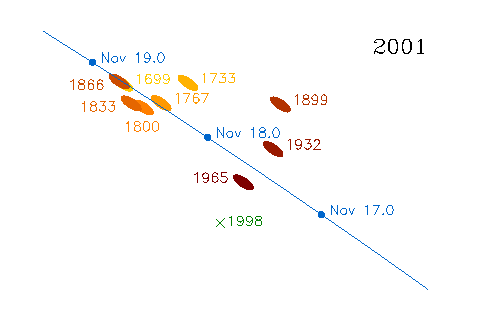
This is the famous "dust-trail-theory" figure of David Asher and Rob McNaught
which expains why and when earth will move through the Leonid dustclouds.
Note earth will pass the outer regions of the 1767 dust-trail on november 18 at 10 UT. This outburst will be visible from the US.
About 8 hours later earth will pass the 1699 and 1866 dust-trails. You will have to
travel to eastern Asia (China, Korea, Japan) or to Australia in order to observe
this outburst.
Please consult the website of Armagh Observatory
for more detailed information.


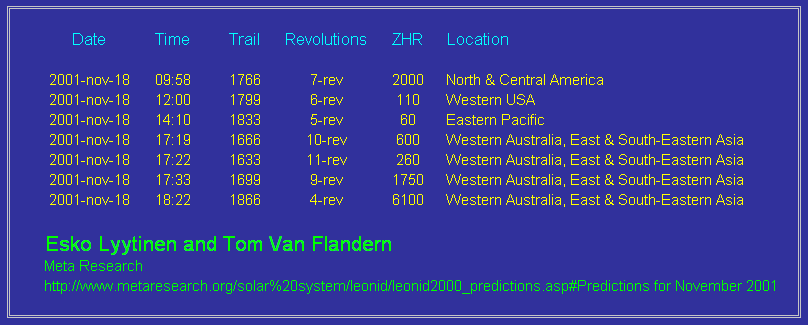
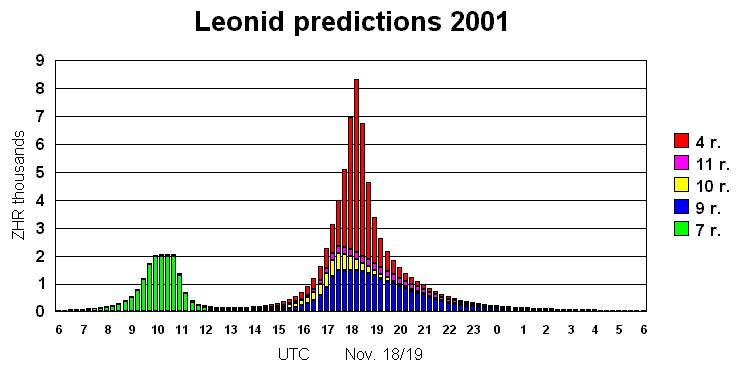
This is the famous figure of Esko Lyytinen which shows the expected
ZHR observers will experience on november 18 when the earth passes the dust-trails
of 10 UT above the US and 18 UT above eastern Asia and Australia.
Note the actual hourly rate observed is lower as indicated in this graph because the
Leonid radiant is not in the Zenit at most locations.
For detailed information please consult: Latest Leonid 2001 prediction graphics by Mr. Esko Lyytinen or This Year’s Leonid Meteors, Meta Research
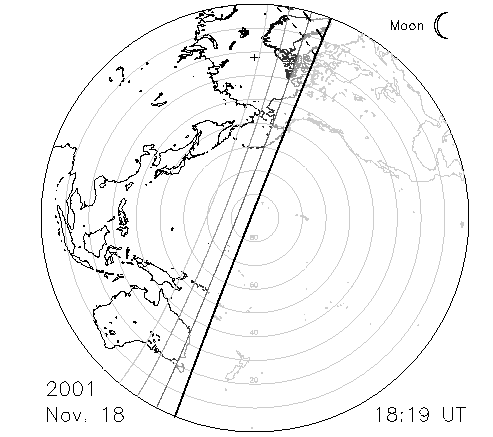
 ASTRONOMICAL SOCIETY OF AUSTRALIA
ASTRONOMICAL SOCIETY OF AUSTRALIAThis fine figure by Rob McNaught very clearly explains where to
watch the Leonids. Note the thick line from top to bottom marks the sunrise at 18h19m UT.
The thinner lines to the left indicate the start of civil, nautical and astronomical
twilight at 18h19m UT.
In the center of this figure the Leonid radiant is at the zenit.
At each circle the Leonid radiant is at a 10 degrees lower position at the sky.
So roughly the radiant will be at 50 degrees in Japan, at 40 degrees in Korea, at
30 degrees near Beijing and at about 25 degrees in Australia.
This figure above by Rob McNaught from the Research School of Astronomy and Astrophysics explains in a nutshell where you have to go to observe the Leonid outburst in november 2001.
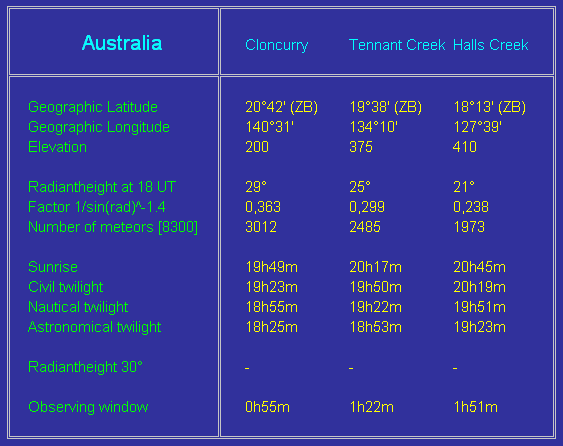
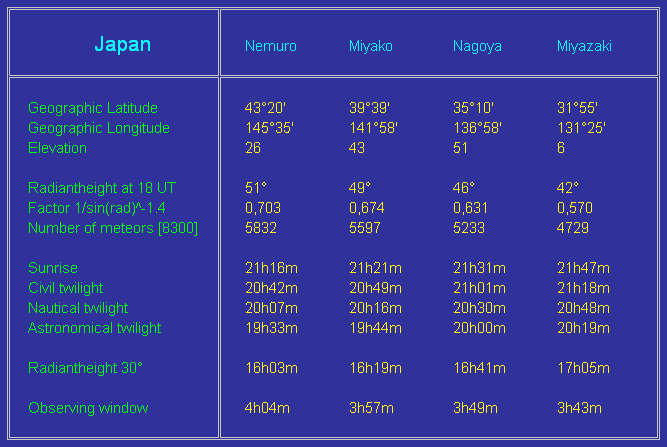
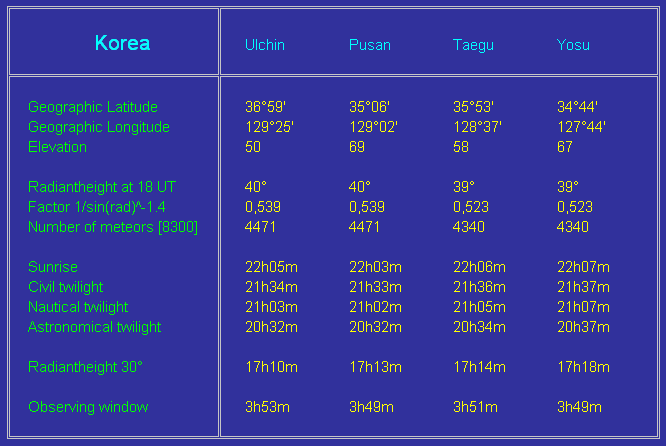
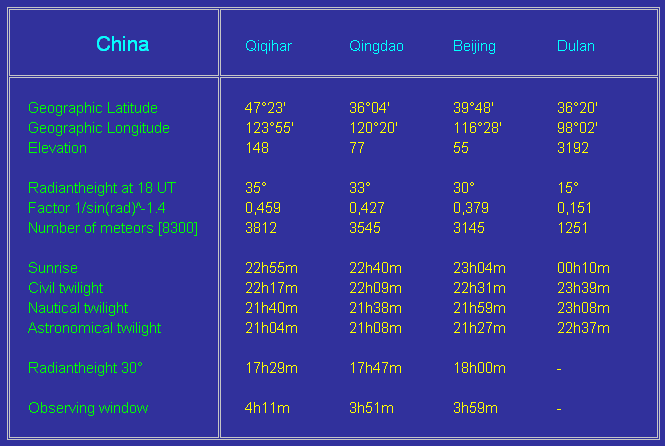
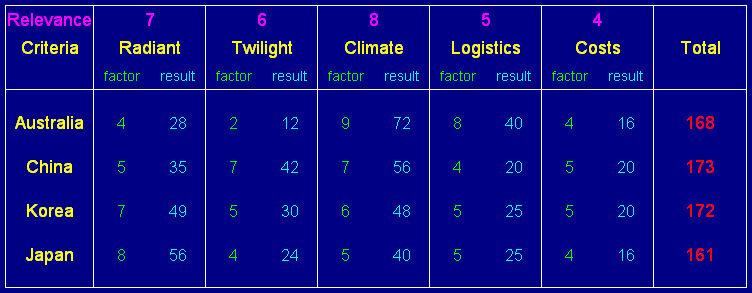
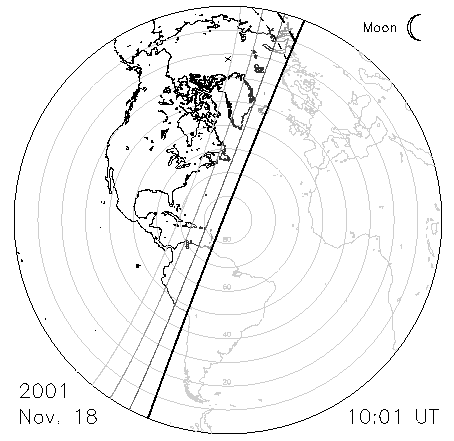
 ASTRONOMICAL SOCIETY OF AUSTRALIA
ASTRONOMICAL SOCIETY OF AUSTRALIAThis figure from Rob McNaught show the situation regarding the november 18, 10 UT dust-trail which, as you will note,
is best observed from the southern states of the United States of America like Arizona, New Mexico, Texas, Oklahoma, Arkansas.
Conditions are very well with the Leonid radiant at 50 degrees elevation and fine climatological conditions.
Please refer tot the website of Rob McNaught for any further detailed information.
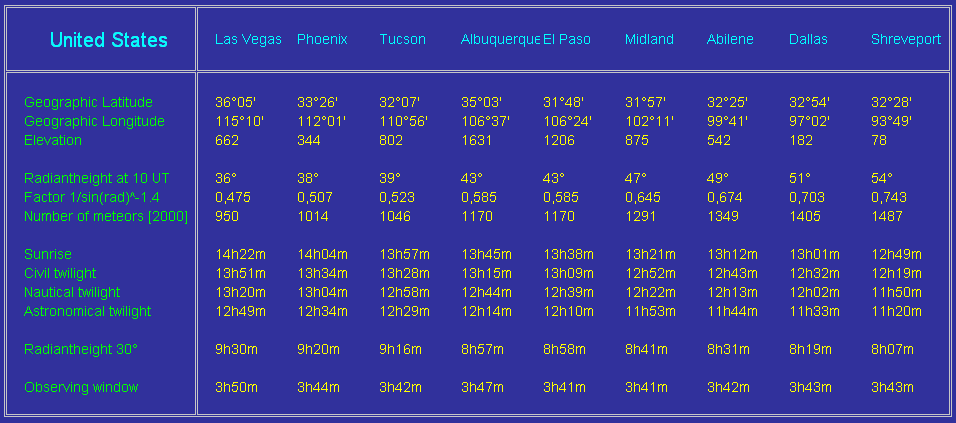
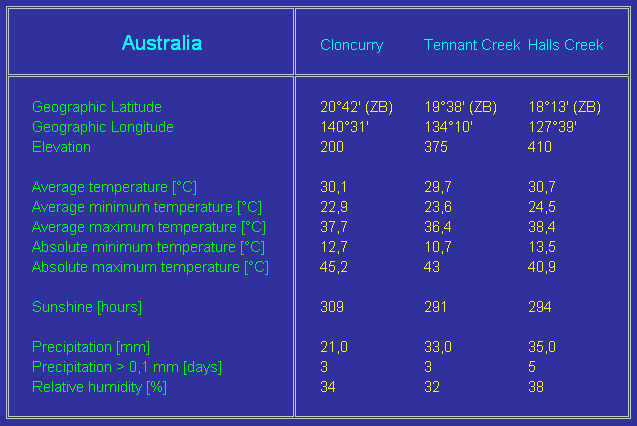
Please consult the Dutch National Weather Service (KNMI) for more detailed climatological information
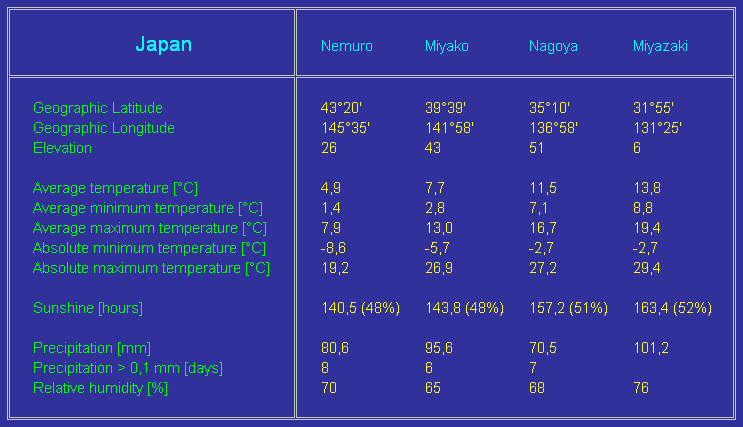
Please consult the Dutch National Weather Service (KNMI) for more detailed climatological information
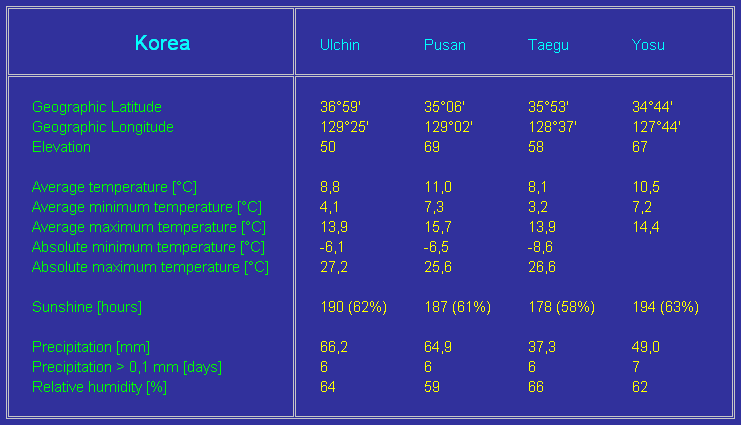
Please consult the Dutch National Weather Service (KNMI) for more detailed climatological information
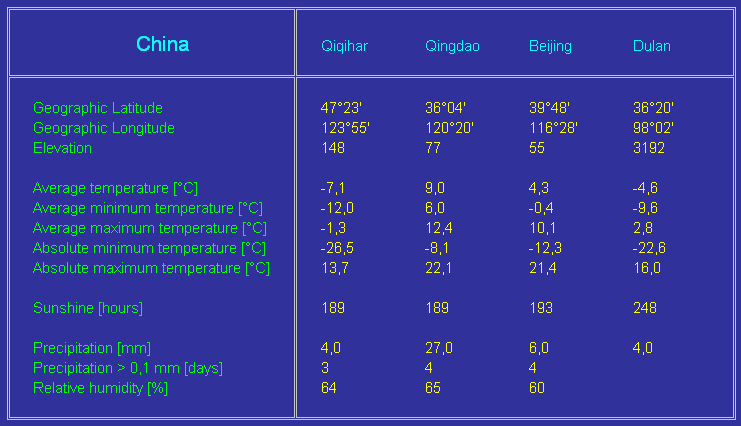
Please consult the Dutch National Weather Service (KNMI) for more detailed climatological information
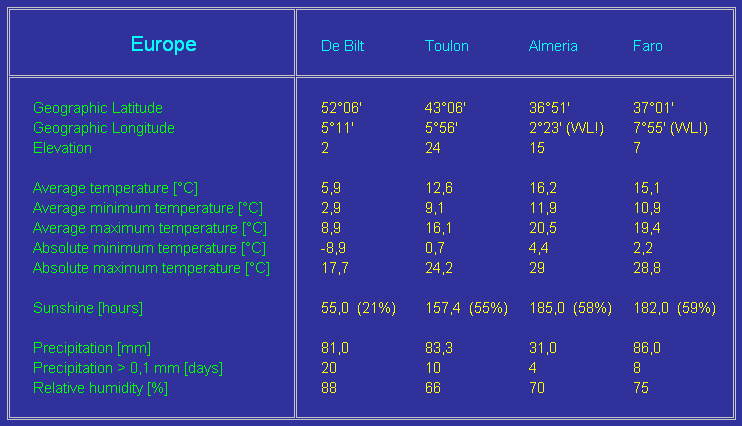
Please consult the Dutch National Weather Service (KNMI) for more detailed climatological information
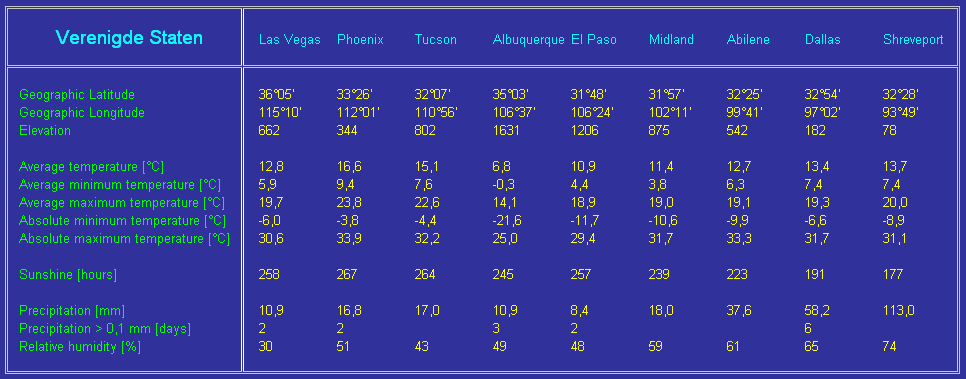
Please consult the Dutch National Weather Service (KNMI) for more detailed climatological information
The US-Dutch Leonid Expedition 2001 to the United States consists of:
- Marc de Lignie
- Esther de Groot
- Carl Johannink
- Elisabeth Middelhoff
- Marco Langbroek
- Romke Schievink
- Rita Verhoef
- Peter Bus
- Jaap van 't Leven
- Klaas Jobse
- Olga van Mil
- Hans Betlem
- Annemarie Zoete
- Michelle van Rossum ?
- Pavel Spurny
- Anna Spurny
- Jiri Borovicka
- Steve Evans
The Sino-Dutch Leonid Expedition 2001 to China consists of:
- Koen Miskotte
- Arnold Tukkers
- Jos Nijland
- Sietse Dijkstra
- Robert Haas
- Alex Scholten
- Casper ter Kuile
Please note more members will probably join these DMS-expeditions at a later time, we are still in the process of preliminary organisation
| Day | Date | Description of Activity |
|---|---|---|
| 1 | Tuesday november 13 | Arrival at Beijing |
| 2 | Wednesday november 14 | Arrival at Xinglong observatory |
| 3 | Wednesday/Thursday november 14/15 | Acclimatisation, meeting fellow observers |
| 4 | Thursday/Friday november 15/16 | Setup and configuring equipment, observing |
| 5 | Friday/Saturday november 16/17 | Testing equipment, observing |
| 6 | Saturday/Sunday november 17/18 | First observing night |
| 7 | Sunday/Monday november 18/19 | Night of the outburst! |
| 8 | Monday/Tuesday november 19/20 | Third observing night |
| 9 | Tuesday november 20 | Rest, preparing for travel to Beijing |
| 10 | Wednesday november 21 | Flight form Beijing to Amsterdam |
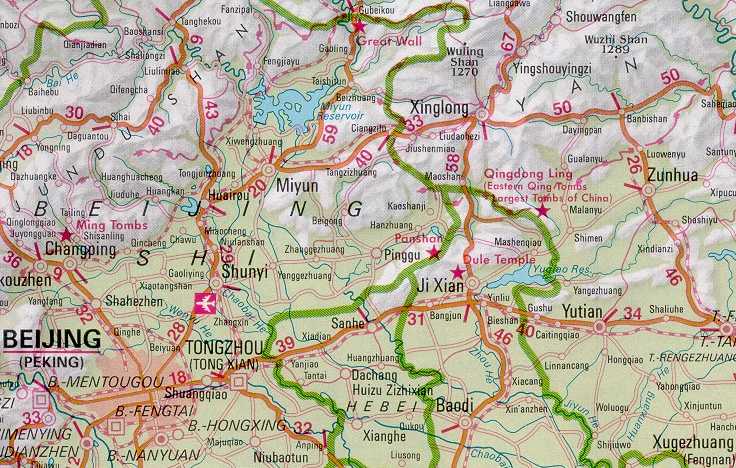
- Chinese Academy of Sciences (CAS)
- Beijing Astronomical Observatory (BAO) - Chinese Astronomy
- Beijing Astronomical Observatory (BAO)- English
- Chinese National Astronomical Observatories (CNAO) - Welcome
- Chinese National Astronomical Observatories (CNAO) - Main Points of the Project
- Chinese National Astronomical Observatories (CNAO) - Briefs
- BAO - Xinglong astronomical station
